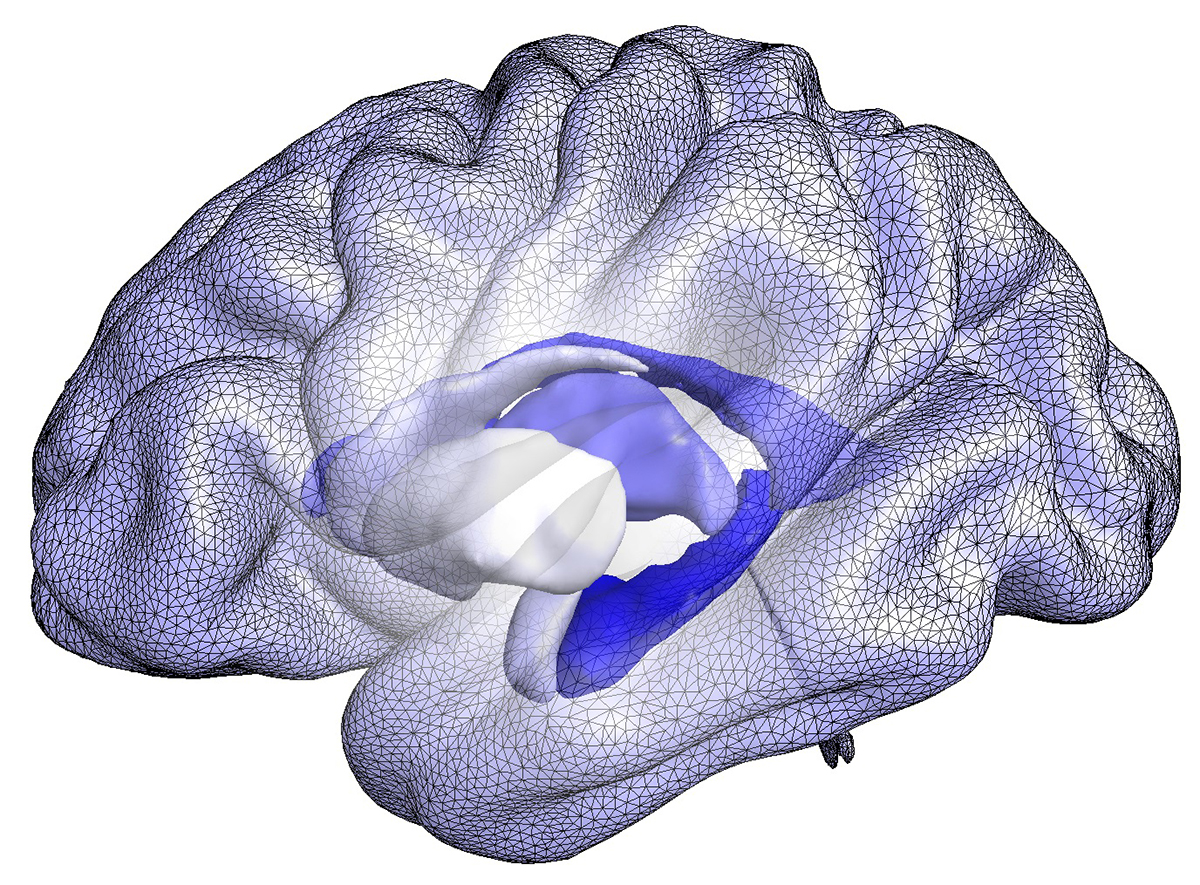Two New Studies Highlight Potential Alzheimer’s Risk Factors

Computational model of the cortical and subcortical brain structures that form the basis of the BrainPrint, a system for representing the whole brain based on the shape, rather than the size of structures/Image via Martin Reuter, PhD, and Christian Wachinger, PhD, Martinos Center for Biomedical Imaging, Massachusetts General Hospital
Two new local studies shed light on the inner workings of Alzheimer’s disease.
The first, from Massachusetts General Hospital, used a proprietary brain imaging technique called BrainPrint to identify individuals who may be at risk of developing the condition. The team looked at how parts of the brain are shaped, rather than how large they are, and posited that people with asymmetrical brains may be at heightened risk of Alzheimer’s.
“Asymmetry of the hippocampus [which regulates emotion and memory] and amygdala [which also deals with emotions, including fear] increases with disease severity, above and beyond age-associated effects,” researcher Christian Wachinger said in a statement. “By studying the progression of asymmetry from mild cognitive impairment to dementia, we demonstrated that greater asymmetry in those and a few other structures can predict disease progression and could be a biomarker allowing early detection of dementia.”
For the study, researchers examined nearly 700 participants’ brain scans. The team grouped individuals by cognitive status—probable Alzheimer’s sufferers at study outset, those with mild cognitive impairment that developed into Alzheimer’s during the study, those with mild impairment that remained stable, and those with no impairment—and used that context to analyze the images. They found that asymmetry of the hippocampus and amygdala, two regions implicated in Alzheimer’s development, is more common in subjects with dementia, suggesting a connection between brain structure and disease onset.
The second study, from Boston University School of Medicine (BUSM), identified two genes that may make African American individuals susceptible to developing Alzheimer’s. That’s a notable finding, as the genetic profile of Alzheimer’s among black patients is nebulous.
The BUSM team examined a prior genome-wide analysis of 5,500 African Americans, and refined the data to account for dementia risk factors such as smoking history, diabetes status, and education level. After doing so, the researchers found two genes linked to a higher risk of Alzheimer’s among African Americans.
That finding not only enhances researchers’ understanding—it may also eventually lead to new treatments.
“Genes that increase risk for [Alzheimer’s] are potential targets for new disease-modifying AD drug therapies,” corresponding author Jesse Mez explained in a statement. “Our study identifies two potentially ‘drugable’ targets.”


